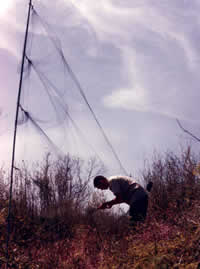Summer Hazards for Workers
Posted on by During the summer, more workers are performing job tasks outdoors. The types of jobs can vary greatly ranging from construction work to farming and other agricultural duties to road paving and painting. While the hazards can be different from those found in indoor environments, there are still practical ways to protect workers from outdoor hazards.
During the summer, more workers are performing job tasks outdoors. The types of jobs can vary greatly ranging from construction work to farming and other agricultural duties to road paving and painting. While the hazards can be different from those found in indoor environments, there are still practical ways to protect workers from outdoor hazards.
The National Institute for Occupational Safety and Health (NIOSH) has worked to compile information regarding various outdoor work hazards and offer safety and health resources to assist employers and workers in avoiding these hazards.
During the summer months, heat illness (including heat stroke, heat exhaustion, cramps, and fatigue) is a prevalent issue for outdoor workers as well as those working indoors. It is not uncommon for outdoor workers to endure temperatures over 100° F during their work day. In another example, heating and air-conditioning contractors in home attics can encounter temperatures of 120° F or more. Many workers in foundries and mines work in hot conditions year round often made worse in the summer months. The NIOSH document Working in Hot Environments provides a detailed overview of the hazards of working in heat and offers prevention measures.
Tips for preventing heat illness include:
- Adjust work schedules to provide workers with a rest from the heat
- Postpone nonessential tasks
- Provide cool rest areas as well as shade and water for workers
- Wear proper protective clothing
- Ensure workers are drinking enough water to stay hydrated
- Allow workers time to acclimate to the hot environment
- Educate workers and supervisors to recognize heat illness and how to prevent it
NIOSH recently contributed to the development of the new Cal/OSHA Heat Illness eTool, which provides general information on heat illness and its causes in outdoor workplaces.
Other hazards faced by outdoor workers include exposure to ultraviolet radiation, which can cause sun burns and potentially skin cancer; noise, which may cause hearing damage; pesticides or other chemical hazards; as well as traumatic injury hazards and the potential for natural hazards such as lightning strikes.
In addition to the physical hazards described above, outdoor workers can face biological hazards such as vector-borne diseases, venomous wildlife and insects, and poisonous plants. Mosquito and tick bites can transfer disease-causing agents, such as West Nile virus or Lyme disease. Outdoor workers also have to be careful around venomous insects and wildlife. Poisonous spiders, snakes, and insects can be found throughout the U.S., varying with the geographic regions. These insects and animals can be especially dangerous to workers who may have a known or unknown allergy. Every year thousands of individuals are stung and as many as 40-50 people may die from severe allergic reactions. Poisonous plants, such as poison ivy, oak and sumac can cause allergic reactions if a worker’s skin comes into contact with the leaves or stalks. If these plants or their leaves are burned, the toxins released can be inhaled by workers, causing rashes or lung irritations as a result. More information on all of the hazards described above can be found on the NIOSH topic page Hazards to Outdoor Workers.
As we have already seen this year, summer brings with it the risk of wildfires, storms, and floods. NIOSH offers resources for fighting wildfires and storm and flood cleanup. Among the many hazards associated with storms and floods is the use of gasoline powered generators, pumps and power tools. Using these devices in buildings or semi-enclosed spaces can lead to carbon monoxide (CO) poisoning including permanent neurological damage and death. Carbon monoxide poisoning has also caused over 100 deaths and 600 illnesses on houseboats and other recreational boats due to hazardous levels of exhaust from generators and propulsion engines.
We have touched on many of the hazards encountered by outdoor workers. However, additional hazards may exist for particular outdoor jobs. NIOSH recommends that employers and workers be aware of and trained to recognize potential dangers associated with the outdoor work in which they may be engaged, of ways to identify those hazards, and ways to prevent risk of injury or illness.
What innovative practices, methods, or tools have you used, or are aware of, that have helped to protect workers from hazards of heat, insect-borne diseases, and other conditions associated with working outdoors? NIOSH is always interested in information that will help inform its ongoing research.
—Christina Bowles
Christina Bowles is a Health Communication Specialist at NIOSH. She has an M.A. in Health Communication and works in the Office of the Director in Washington, D.C.
Posted on by

